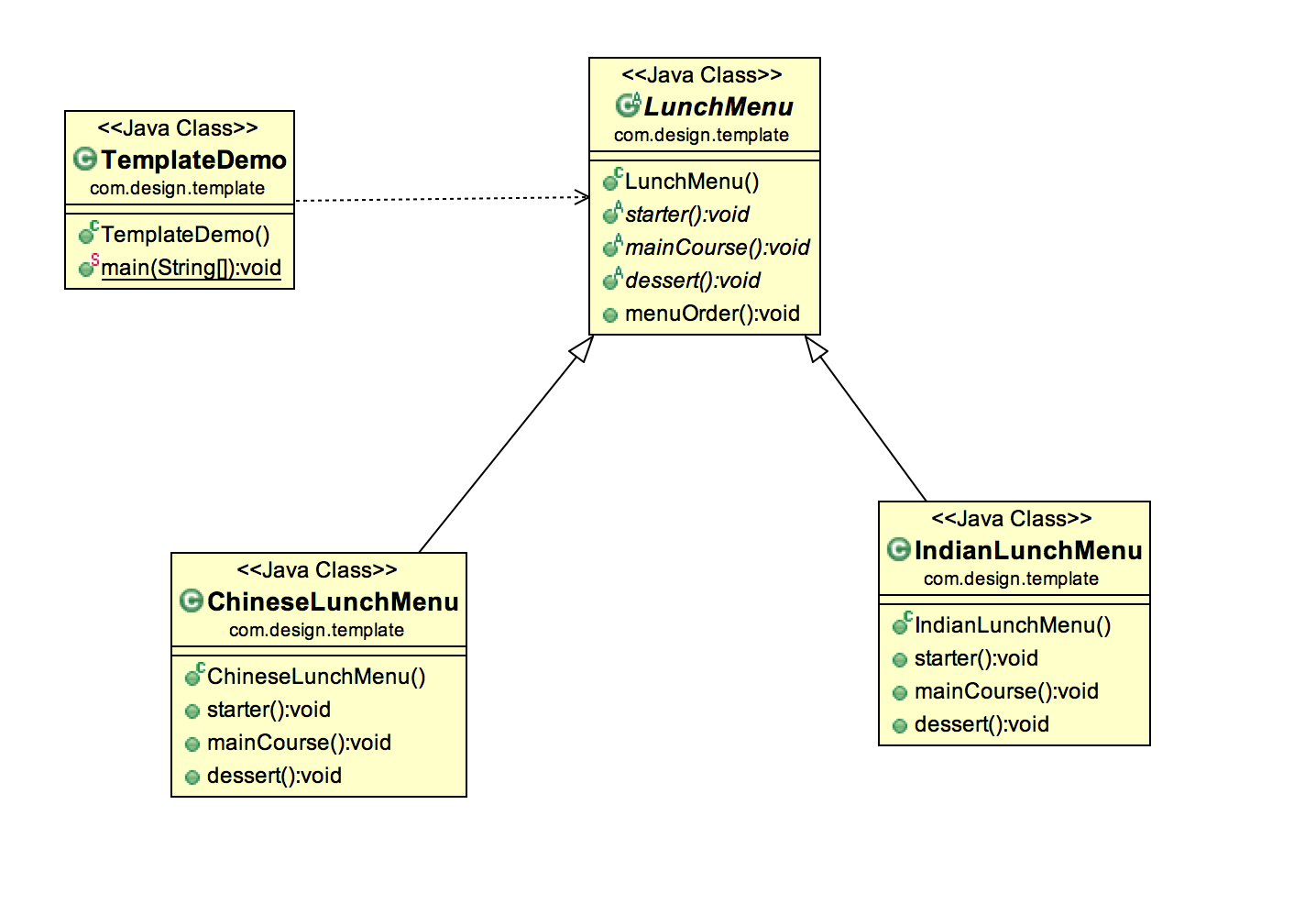In this article, we will do an in-depth exploration of Template Design Pattern in Java. So, let’s get started.
What is Template Design Pattern in Java ?
The Template Design Pattern in Java is a behavioral design pattern that provides a reusable structure for a series of steps or operations in a software application. It defines the skeleton of an algorithm in a base class, allowing subclasses to provide specific implementations for certain steps while keeping the overall structure intact.
Benefits of Using Template Design Pattern in Java
By utilizing the Template Design Pattern, developers can achieve several benefits, including:
- Code reusability: The common behavior defined in the template class can be reused across multiple subclasses.
- Flexibility: Subclasses can override specific steps to customize the algorithm’s behavior while keeping the overall structure intact.
- Modularity: The template class provides a clear separation between the algorithm’s structure and the implementation details of individual steps.
- Maintainability: Changes to the algorithm can be made in a single location (the template class), which automatically applies to all subclasses.
- Extensibility: New subclasses can be easily added to introduce variations of the algorithm without modifying existing code.
Use-Cases: Template Design Pattern in Java
Here are some real-world use cases where the Template Design Pattern is commonly applied:
- Web Application Frameworks: Frameworks like Spring and JavaServer Faces (JSF) utilize the Template Design Pattern to define the structure and flow of web pages.
- Database Access: Database frameworks such as Hibernate and JDBC often employ the Template Design Pattern to handle common database operations. The framework defines a template class with pre-defined steps for opening a connection, executing queries, and handling transactions. Developers can extend the template and provide custom implementations for specific queries or transactions, while reusing the common database handling code.
- Report Generation: In applications that generate reports, the Template Design Pattern can be used to define the structure and formatting of the reports. The template class defines the overall structure of the report, including sections, headers, footers, and data placeholders. Subclasses can provide specific implementations for fetching data and populating the report template, while the template handles the generation and formatting logic.
- Game Development: Game development frameworks often utilize the Template Design Pattern to define the structure of game levels. The framework provides a base template with pre-defined steps for rendering, updating game objects, handling input, and managing collisions. Game developers can extend the template and provide custom implementations for specific game logic, while relying on the template for the overall game flow.
- Workflow Systems: Workflow systems use the Template Design Pattern. The framework defines a template class that outlines the sequence of steps and the required inputs/outputs. Subclasses can provide implementations for individual steps, allowing the workflow system to execute the steps in a consistent manner while allowing customization for specific workflows.
- Email templates: In email systems, templates are used to create consistent and customizable email formats, allowing for the reuse of common elements while personalizing the content.
Example: Template Design Pattern in Java
In the below example, we have the LunchMenu class which defines the algorithm(i.e. the Menu Order). The child classes IndianLunchMenu and ChineseLunchMenu provide different implementations for the Menu Order.
Class Diagram

Java Code
// LunchMenu Abstract Class
package com.design.template;
public abstract class LunchMenu {
public abstract void starter();
public abstract void mainCourse();
public abstract void dessert();
public void menuOrder() {
System.out.println("----------------" + this.getClass().getSimpleName() + "-------------");
starter();
mainCourse();
dessert();
System.out.println("--------------------------------------------");
}
}
// IndianLunchMenu class
package com.design.template;
public class IndianLunchMenu extends LunchMenu {
@Override
public void starter() {
System.out.println("Starter:Chilly pakoda and chilly Babycorn");
}
@Override
public void mainCourse() {
System.out.println("MainCourse:Rice,Roti,Dal and Paneer Masala");
}
@Override
public void dessert() {
System.out.println("Dessert:Kheer");
}
}
// ChineseLunchMenu Class
package com.design.template;
public class ChineseLunchMenu extends LunchMenu {
@Override
public void starter() {
System.out.println("Starter:Sweetcorn Soup,Momo and dumplings");
}
@Override
public void mainCourse() {
System.out.println("MainCourse:Chinese Fried Rice");
}
@Override
public void dessert() {
System.out.println("Dessert:Pumpkin Pancake");
}
}
// TemplateDemo Class
package com.design.template;
public class TemplateDemo {
public static void main(String[] args) {
LunchMenu indianMenu = new IndianLunchMenu();
indianMenu.menuOrder();
LunchMenu chineseMenu = new ChineseLunchMenu();
chineseMenu.menuOrder();
}
}
// Output
-- -- -- -- -- -- -- --IndianLunchMenu-- -- -- -- -- -- -
Starter: Chilly pakoda and chilly Babycorn
MainCourse: Rice, Roti, Dal and Paneer Masala
Dessert: Kheer
-- -- -- -- -- -- -- -- -- -- -- -- -- -- -- -- -- -- -- -- -- --
-- -- -- -- -- -- -- --ChineseLunchMenu-- -- -- -- -- -- -
Starter: Sweetcorn Soup, Momo and dumplings
MainCourse: Chinese Fried Rice
Dessert: Pumpkin Pancake
-- -- -- -- -- -- -- -- -- -- -- -- -- -- -- -- -- -- -- -- -- --Conclusion:Template Design Pattern in Java
In this article, we have delved into the Template Design Pattern in Java, an approach that streamlines software development by providing a reusable structure for algorithmic steps. By understanding its definition, benefits, real-world applications, and a practical code example, you’ve gained insights into how the Template Design Pattern can enhance code reusability, flexibility, and maintainability.
Must Read Design Pattern Articles:
- Professional Tips: Top 10 Design Principles in Java 2023
- SOLID principles in Java: A Comprehensive Guide in 2023
- Design Patterns in Java: For Efficient Development 2023
For more comprehensive understanding you can go through the book by Erich Gamma, Richard Helm, Ralph Johnson, and John Vlissides, also known as the “Gang of Four” (GoF) Design Patterns: Elements of Reusable Object-Oriented Software
